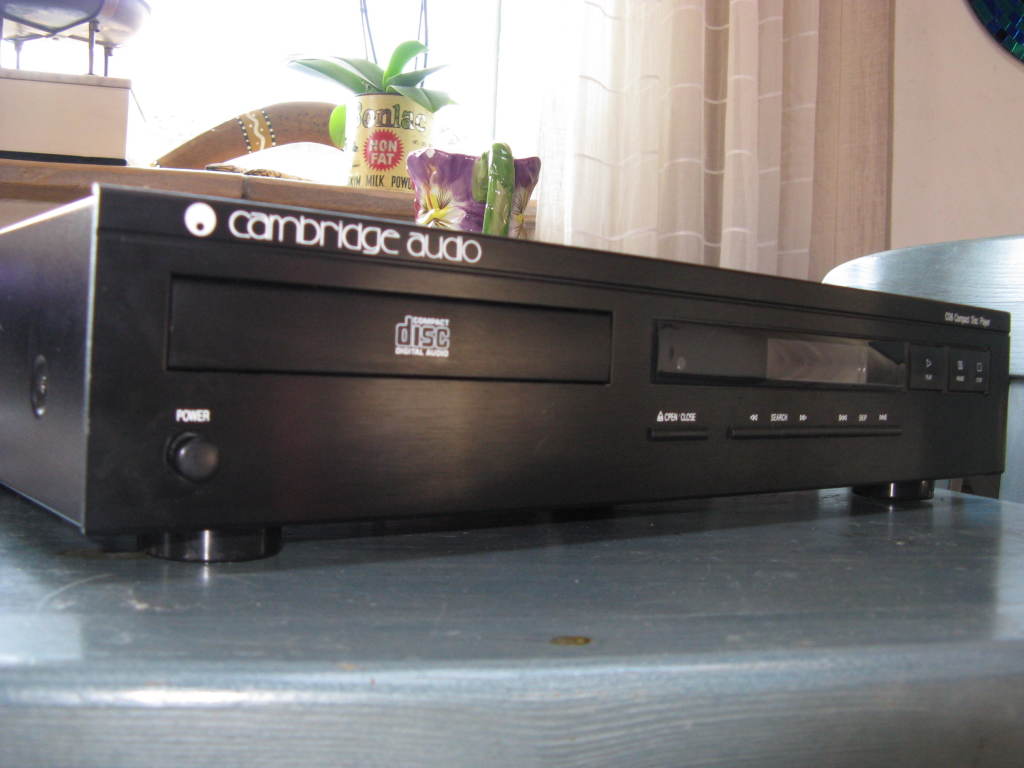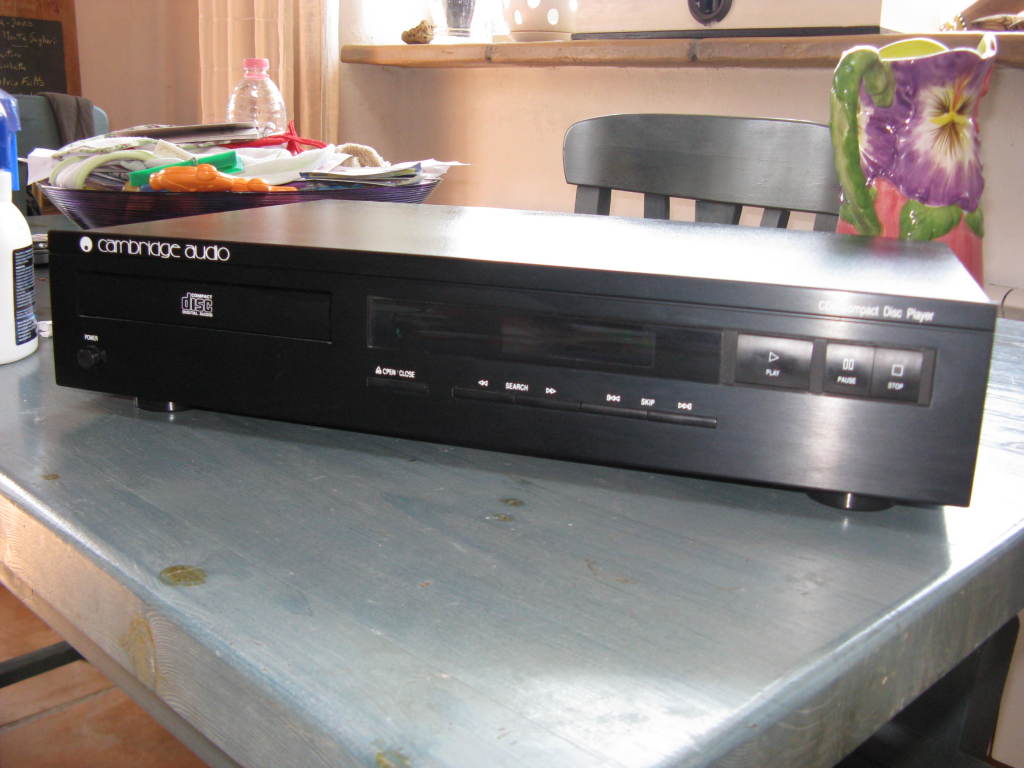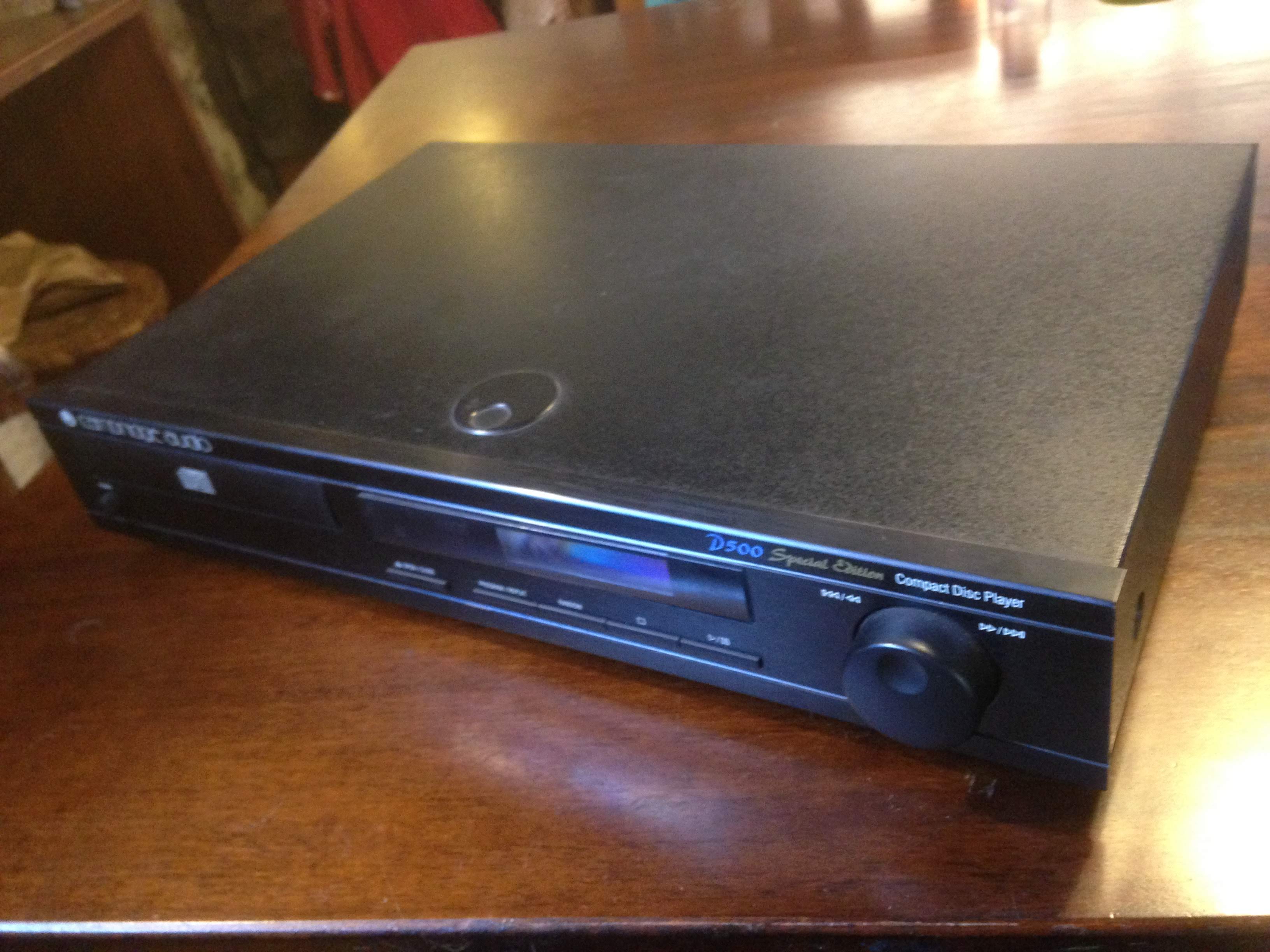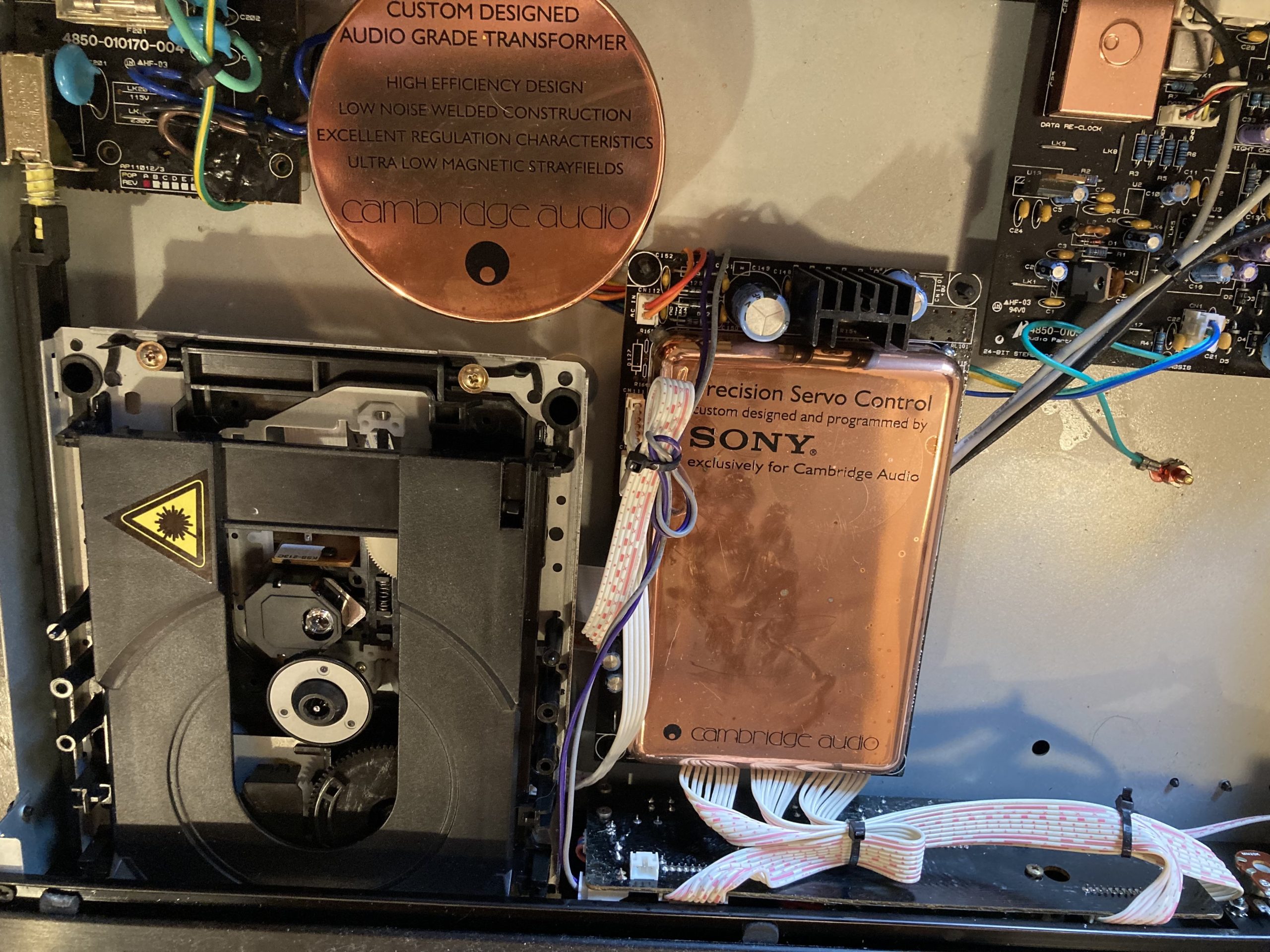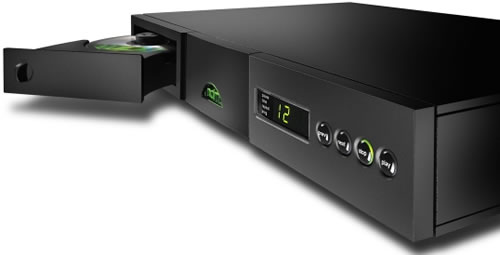My first digital player was a Philips CD-16 (below) I bought in the second half of the 80s. A renown HiFi shop in Rome sold it to me as a bitstream (or 1-bit) player, the new Philips technology for D/A conversion sections known for giving low price players an unusually good sound for the times. As I found out on the minute I arrived home, it was an ordinary 16-bit CD player, as it was made clear by its very name. I decided to keep it all the same since I thought Philips had invented the CD whose standard is based on 16-bit sampled sound. I also happened to like the sound thanks to the fact I had no turntable at the time (my first one was certainly not fine-tuned, since I didn’t know much about adjustments then). Furthermore, I had been playing a cassette deck for years, no wonder I found the CD sound quality superior…
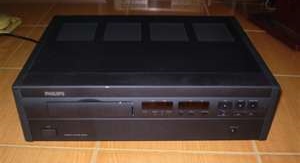
Philips CD 16
A few years later, browsing through HiFi magazines, I was struck by the review of the JVC ZL-Z431 (below), a CD player that really used bitstream technology. The price was extremely inviting, a bit less than 200 thousand Lire, and the performance promised to embarrass the competitors. I sold the Philips CD and bought the JVC along with an Onlyo A-8200 integrated amplifier (in a different shop, obviously). When eventually I upgraded my system with the TDL loudspeakers and the Unison Research amp, the JVC player, though good, was not worth the rest of the system. I had just graduated, I had no job, I dreamed about players such as the Meridian 506 CD but I certainly could not afford it at around 1 million Lire. I resigned myself to look for unsold stock models that had just gone out of production and were sold at lower prices.
I stumbled upon a Pioneer CD player from the Reference series, the PD-8500; nothing special but with good reading mechanics, heavy weight, honeycomb base structure, dampened CD tray and the acclaimed Burr-Brown 24-bit converters (other than 1-bit! A few years later, multibit converters proved superior to bitstream, at least in some cases). I shelled out 230 thousand Lire and from January 1993 my digital source was still the weak link of my system, but at least it was a more dignified one. Finally I was able to listen to some things my beloved loudspeakers were capable of!
I few years after, in 2001, I exchanged the Pioneer for a used Cambridge Audio CD-6 (in the same shop where I bought my first CD from Philips): it featured a very good reading section and a warm sound. I found some irony in the fact it used bitstream converters. Its successors would have adopted Burr-Brown 24 bit converters but I had listened to the CD-6 in comparison to a brand new Marantz and I liked the Cambridge more. It used three separate power supplies for the digital, analogue and optical sections. It also had balanced XLR outputs (which I’ve never used). I fell in love with Cambridge Audio players during a 1-month trip to Leeds, UK. Once back, I searched for a used one and I found it in the aforementioned shop for €600 (€200 plus my old Pioneer – a good treat for the trick they played on me years before!). The wonderful player was top of the line in Cambridge Audio’s offer of the time. It would cost 1 million Lire when it came out (1996). Finally my system was balanced and I did fulfill many of my goals. Still, it was technology from the 90s and time matters a lot in digital technology.
Modern cheap models sound decidedly better than those from 10 years ago, let alone those from 15 years ago! Since my old DVD player was nearing the end of its days, I started to think about something I would have flinched at a few years before: using a DVD player for both music and films! Since recently, an American firm manufacturing in China, the Oppo Digital, was on everybody’s lips for the exceptional video quality of their non expensive multiplayers. The amazing performance was due to extremely good digital processors that were once very expensive external components. The latest models were able to interpolate the lines of a standard DVD video in order to upscale it to HD specifications. This is not real Blue-Ray HD but one of those Oppos can really bring a DVD to its maximum. For what I care about video it would really be it. What I’m really concerned of is audio. After a while, someone realized those unassuming players, so much acclaimed in the Home Theater community, so versatile in playing any kind of disc format, CD included, could also sound damn good. Reality is a €150 DVD player can’t completely outperform a proper €1000-2000 CD player. But in high fidelity we’re talking about shades, especially when digital players are concerned. A big digital player’s detail and freshness can mean nothing to many, who would never spend hundreds, let alone thousands of euros for mere shades. Years before I had the chance to evaluate Linn’s first CD player for a week in my home. It was big news since the Scottish brand was famous for their turntables. They refused to convert to digital for years. In order to keep the Linn CD I would have had to spend 5 million Lire! I compared it to my Pioneer PD-8500 Reference. It was clear it sounded better, you can bet on it, but the shades I was able to detect were not worth the price difference: 230 thousand vs. 5 million Lire! It is also plain that my system, although a very good one, was only worth about 1/5 per component with respect to the Linn. Therefore, I was not able to perceive what the Scottish player was really able to offer. I wouldn’t even spend 1 million to listen to those hues.
In those days, as Linn went back to make just turntables, the Oppo multiplayers offered a high quality sound at really inexpensive prices. They performed with dignity when compared to the giants and at that price they completely floored any competitor (even something more). They can also play any kind of digital disc, the most recent models even Blue-Ray (but the price is higher). In 2010, I found my Oppo DV-980H used on eBay for €150. It was in very good conditions, it played very well, at least as good as if not better than my old Cambridge, which I had sold for €85 to an “old CD players” geek (I regret I did). For what concerns audio specs, it featured 24-bit, 192 KHz D/A converters and could play SACD, HDCD and DVD Audio (unborn formats I will never use). A very good bargain, the more so since it replaced both my old CD and DVD players. For the movies, the quality is unbelievable, well over its category, thanks to a Mediatek video processor allowing the 980H to interpolate the lines of a DVD up to the 1080 lines of High Definition video (it brought normal DVDs to Full-HD, but could not play Blue-Ray discs). By inserting a simple code I was able to make the 980H read DVDs from any regions of the world. One more gadget is the front USB input for viewing photos and playing videos in DivX, upscaled to the best format they can be played at.


I first went for a D300SE at 50 euros shipping included. But it was shipped in just a cellophane wrap. It could not read CDs at all, no matter what I tried to solve the issue. I claimed my money back for the poor packaging and I found a more honest add about a D500SE whose outputs were silent but the digital ones were working fine. Same price, great packaging assured, so I went for it.
In my current situation I couldn’t ask for more. If digital technology in 20 years has made great strides, no big deal, the D500SE seems to be an excellent Sony transport with specially designed servo mechanism. The player has BNC and Toslink digital outputs. The former is considered the best solution, superior even to RCA (optical is the worst standard, to be used only if there is no other choice). So I took a good RCA-BNC cable and connected the D500SE to my humble but honest Pro-Ject DacBox E. Actually, I would like to compare the Cambridge’s internal DAC with my Pro-Ject but at the moment I have not been able to repair its operation. I am curious about this because the DacBox is not badly designed and the Cambridge’s internal DAC section is similar to the DacMagic, a model I would think of for a first upgrade of my conversion unit. Knowing that the differences between cheap and expensive DACs are pretty slight anyway, I’m pretty comfortable that this is good enough for now.
I would certainly like to upgrade to a Cambridge Audio CXC transport, although I could go on dreaming about separate units by Naim (like the CD 5i that would perfectly team up with my amplifier), or a Unison Research, Meridian, Rega, Audio Analogue, but what about the money? Would it be worth it? Not now. I’m good…
Future possibilities
 Harsh reality would demand that we use the computer as the best digital source available today, oer a network player. Cocktail Audio offers very good ones. They do it all: streaming from Spotify and similar services, ripping CD and storing the files while playing them. It would be the best choice. The first model they issued, the X10, is not easily found used. Later models had higher prices, too much for me now (the wondeful X30 at top left). Hooked to a good DAC unit it would be an easy to use quality source.
Harsh reality would demand that we use the computer as the best digital source available today, oer a network player. Cocktail Audio offers very good ones. They do it all: streaming from Spotify and similar services, ripping CD and storing the files while playing them. It would be the best choice. The first model they issued, the X10, is not easily found used. Later models had higher prices, too much for me now (the wondeful X30 at top left). Hooked to a good DAC unit it would be an easy to use quality source.
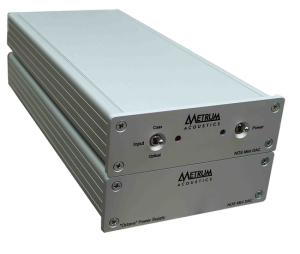 Therefore, the smartest thing to do would be saving all our music in high resultion files on a large hard disk and play them through a good multiplayer hooked to an excellent D/A converter (such as the Metrum Acoustics DAC Quad, at right), that could even connect my Macbook by a toslink optical cable. The occasional CD playback could be assigned to a modern and affordable transport like the Cambridge Audio CXC.
Therefore, the smartest thing to do would be saving all our music in high resultion files on a large hard disk and play them through a good multiplayer hooked to an excellent D/A converter (such as the Metrum Acoustics DAC Quad, at right), that could even connect my Macbook by a toslink optical cable. The occasional CD playback could be assigned to a modern and affordable transport like the Cambridge Audio CXC.
Sure, I still dream about a proper upper-level CD player among those from Unison Research, Astin Trew, Meridian, Audio Analogue, Rega or Naim (at left, the excellent CD 5i). I’m not sure I would feel safe with all my music stored in a hard disc: I would always be worried about a technical failure, about the idea of losing everything in a blink of the eye. I like the physical media (I love vinyl!) although I’m tickled by the idea of a “liquid” format superior to the CD format, that seems to be reaching its end. They used to say the same about vinyl records (and film photography), so I don’t find anything strange in continuing to use CDs and upgrade the player with a top level one. I could prefer made in Italy players, for instance the Unison Research Unico CD Primo.
 It has been vastly reviewed with enthusiasm, it features a valve state output and a “vinyl-like” sound. Some can be used as DAC through a digital coaxial input, some (more expensive ones) have a USB port. I could then experiment with liquid music, although I heard some claiming that sound quality is not really affected much by the density of digital information. High-rank CD players don’t seem to make you desperately wish for a HD format. Although I’ve never really loved the CD format, today I wouldn’t mind keeping on swapping discs rather than organizing playlists on the computer. In summary, choosing a CD player from the same maker of my current amp would somehow keep a certain synergy, especially if one day I’ll opt for a new amplifier from the same Italian manufacturer within the Unico series like in the picture at the side.
It has been vastly reviewed with enthusiasm, it features a valve state output and a “vinyl-like” sound. Some can be used as DAC through a digital coaxial input, some (more expensive ones) have a USB port. I could then experiment with liquid music, although I heard some claiming that sound quality is not really affected much by the density of digital information. High-rank CD players don’t seem to make you desperately wish for a HD format. Although I’ve never really loved the CD format, today I wouldn’t mind keeping on swapping discs rather than organizing playlists on the computer. In summary, choosing a CD player from the same maker of my current amp would somehow keep a certain synergy, especially if one day I’ll opt for a new amplifier from the same Italian manufacturer within the Unico series like in the picture at the side.
The Cambridge Audio D500SE on tnt-audio.com.
The Cambridge Audio CXC on tnt-audio.com.
The DV-980H on the Oppo Digital website
Oppo DV-980H review on steo.it
Geoff Husband compares the Oppo 980H and the 983H on tnt-audio.com
Oppo 980H review on prillaman.net
The Metrum Acoustics Octave D/A converter on tnt-audio.com


